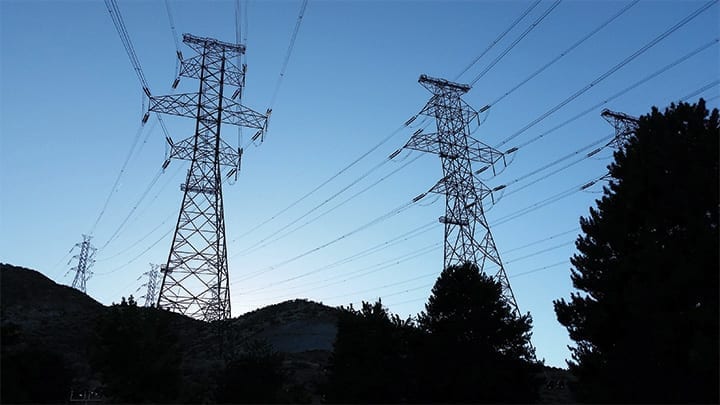Utilities Forecasting with AMI Amid COVID-19
COVID-19 has caused a dramatic shift in the consumption of electricity across the U.S. Stay-at-home mandates have forced millions of businesses to close or shutter their offices and storefronts, dramatically reducing the consumption of commercial electrical power.
The millions of people who typically commute to work are mostly working remotely and consuming more power at their homes than they would otherwise. Though mandates have started to lift, the continuing pandemic carries serious implications for electric utilities.
Historically, utility providers have tracked both residential and commercial electrical power consumption in seasonal or monthly increments. However, the COVID-19 pandemic has shown that utilities need to have a more granular and real-time understanding of power usage to forecast consumption accurately during unexpected events. Enter advanced metering infrastructure (AMI).
Utilities have historically taken advantage of several disparate, often one-way data streams to inform data-driven decisions. By taking economic data, load data, and weather patterns into consideration, utilities can predict power consumption and shortages, as well as adverse events caused by natural disasters. While natural disasters and economic downturns can be predicted by closely monitoring weather and economic data, it’s nearly impossible to plan for black swan events like COVID-19.
 |
|
1. Utilities during the COVID-19 pandemic have realized the importance of leveraging advanced technologies to help with forecasting electricity demand and consumption. Source: Creative Commons / Varistor60 |
The pandemic is hastening the adoption of cloud services for utilities (Figure 1). With essential businesses, including electricity providers, forced to manage some operations remotely, many are shifting to cloud-based solutions. Even before COVID-19 hit the U.S., the electricity industry was starting to adopt the cloud, and the pandemic has helped demonstrate to utilities that leveraging cloud capabilities and allowing staff to work remotely provides many benefits, and does not jeopardize security.
Adopting advanced applications by necessity because of the pandemic has allowed utilities to experience broader benefits as well, enabling them to monitor and analyze deep insights on power usage and production data remotely to comply with stay-at-home mandates.
AMI-Enabled Utility Operations
Electrical utilities can leverage AMI data to monitor power usage by using smart meters to report consumption in near real time. This data in the past has been collected on annual, seasonal, or monthly increments, allowing utilities to slowly analyze power consumption over time and identify seasonal trends in electricity usage. For example, by analyzing monthly or seasonal consumption snapshots, utilities were able to assess whether and when a household turns on its heating, ventilation, and air conditioning (HVAC) system in the summer and winter. This helps utilities predict demand and consumption levels at various points of the year, enabling adjustments in production to meet consumer demand—but only after the fact.
Advanced AMI capabilities such as distributed intelligence (DI) are allowing utilities to monitor power production and consumption by the day, hour, or even in seconds. This enables a much more in-depth and timely analysis of electricity consumption, allowing utilities to make more informed and timely operational decisions. In addition, DI-enabled AMI can provide visibility to edge grid transactions such as solar power generation, providing even more granular insights on bi-directional power flows. Utilities also can leverage data surrounding power plant productivity supplemented by grid insights provided by DI in advanced forecasting models.
Forecasting Implications of AMI Data
The core impact of AMI data is that, if utilities have greater access to the more granular data, they can better understand what is happening in terms of impact on power consumption patterns. AMI data enables utilities to more accurately forecast future demand, production, and consumption.
The COVID-19 pandemic has uncovered a real need for the rapid availability and aggregation of AMI data. Near-real-time AMI data can show the changes in electricity consumption hour-by-hour, or even every quarter-hour, informing utilities on the behavior of their customers. For example, with much of the U.S. workforce working remotely from home or simply quarantining within their residence during the pandemic, utilities have widely noticed changes to the aggregate system load that would not have otherwise been apparent without AMI data.
Because workers are not commuting, some are waking up later. This causes the system load to ramp up later in the morning than it did before the pandemic, meaning that peak load hours shift slightly later in the day. If utilities relied solely on limited monthly consumption meter data, this change would be completely invisible to them.
Because of the short-term intervals of AMI data, utilities can also assess exactly when in the day a consumer’s HVAC system turns on and begins to consume power. By analyzing hourly data, an AMI solution can deliver a complete picture of a consumer’s electricity usage and when and why that power is being used. This allows utilities to work with consumers to offer flexible rates based on adjusted peak load hours, which often cause a higher billing rate for any electricity used during those peak daily hours. Residential energy usage is changing significantly due to COVID-19, and forecasting electricity consumption as the pandemic alters demand patterns will be a balancing act, requiring highly granular AMI data if utilities are to accurately predict demand and consumption trends. ■
—Frank A. Monforte, PhD is director of Forecasting Solutions at Itron.